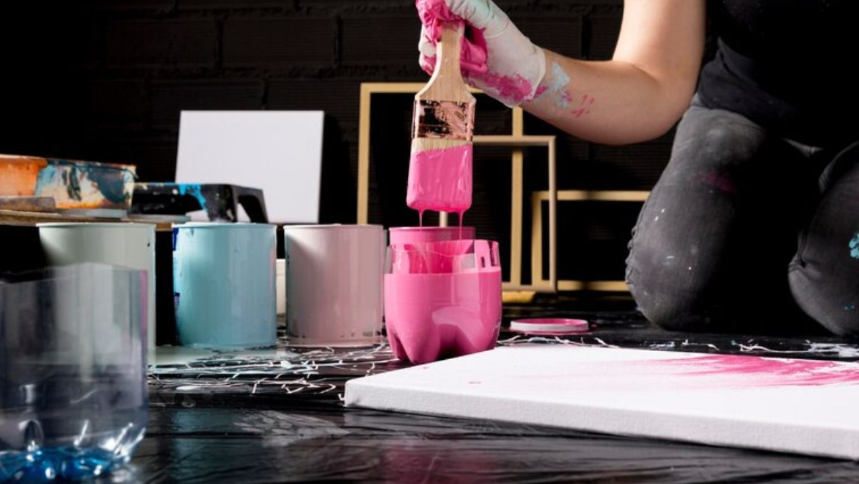Screen printing is a versatile and popular printing technique, used for everything from custom apparel to posters and signage. The key to successful screen printing lies in the choice of ink, and one of the most favored options among professionals is Skip Marsh Plastisol Ink. Known for its excellent quality, durability, and versatility, this ink has become a go-to choice for many in the industry. In this ultimate guide, we’ll take a closer look at Skip Plastisol Ink, exploring its features, benefits, application process, and why it’s such a popular choice for screen printing professionals.
What is Skip Marsh Plastisol Ink?
Skip Plastisol Ink is a type of ink widely used in screen printing. It is a PVC-based ink, making it incredibly durable, flexible, and easy to work with. Plastisol inks, including Marsh Plastisol Ink, are favored for their ability to sit on top of fabrics rather than soaking into the material. This results in vibrant colors that don’t fade easily, ensuring that printed designs stay bright and bold for a long time.
Unlike water-based inks, which can be tricky to use, plastisol inks like Skip Marsh are simple to handle and offer a wide range of benefits that make them ideal for high-volume production.
Key Features of Skip Marsh Plastisol Ink
-
Durability
One of the standout features of Skip Marsh Ink is its durability. When properly cured, this ink provides a strong, long-lasting finish that can withstand washing and regular wear and tear. This makes it an excellent choice for printing on apparel, particularly for custom t-shirts, hoodies, and other garments that are washed frequently.
-
Vibrant Colors
Skip Marsh Ink offers vibrant and opaque colors, allowing for bold designs that stand out. Whether you’re printing on light or dark fabrics, the color intensity remains high, and the design doesn’t lose its impact. This is one reason why it is preferred for custom apparel printing, where color accuracy and vibrancy are critical.
-
Versatility
This ink works well on a variety of fabrics, including cotton, polyester, and blends. It can also be used for other materials such as paper and cardboard, making it versatile for different types of projects. Whether you’re printing on dark or light-colored garments, Skip Marsh adapts and performs excellently.
-
Ease of Use
Plastisol inks, in general, are easy to use, and Skip Ink is no exception. It’s thicker than water-based inks, which means it doesn’t dry out quickly in the screen or on the mesh. This allows screen printers to work at a relaxed pace, giving them more time to get the perfect print. Plus, plastisol ink doesn’t require a lot of special handling or complex curing processes, making it ideal for both beginners and seasoned professionals.
-
Curing Process
Proper curing is essential for achieving the best results with Skip Marsh Ink. Plastisol inks do not air-dry; they need to be heated to a specific temperature (typically around 320°F or 160°C) to cure properly. This ensures that the ink bonds to the fabric and results in a durable, long-lasting design. The curing process is relatively simple, and most screen printers have the necessary equipment, such as conveyor dryers or flash dryers, to handle the job.
How to Use Skip Marsh Plastisol Ink for Screen Printing?
Using Plastisol Ink for screen printing is a straightforward process, but it does require attention to detail and some preparation. Here’s a step-by-step guide to using this ink effectively:
Step 1: Prepare the Screen
First, you need to set up your screen. Make sure the screen is properly cleaned and coated with emulsion. The emulsion needs to be exposed to light using a UV exposure unit, which will create a stencil for your design. Once the emulsion is exposed, it’s time to wash out the design with water.
Step 2: Set Up the Press
After the screen is ready, set it up on your screen printing press. Ensure that your press is level and the screen is aligned correctly to avoid any issues during printing.
Step 3: Load the Ink
Open the container of Plastisol Ink and pour the desired amount into the screen printing ink tray. Make sure the ink is evenly spread along the edge of the screen. If needed, you can use a spatula or ink knife to help spread it.
Step 4: Print Your Design
Place the material (such as a t-shirt) onto the platen of the press. Lower the screen, then use the squeegee to push the Plastisol Ink through the mesh onto the garment. Make sure to apply even pressure to ensure a smooth, consistent print.
Step 5: Cure the Ink
After printing, the ink needs to be cured. This involves passing the printed garment through a conveyor dryer or curing it with a flash dryer to reach the required temperature. The ink will solidify and bond with the fabric once the curing process is complete.
Step 6: Check for Quality
Once the print has been cured, check the print for any imperfections. This is an important step to ensure that the design is vibrant and properly set. If any issues arise, you can reprint the design on a new garment.
Tips for Successful Screen Printing with Skip Marsh Plastisol Ink
To achieve the best results when using Marsh Ink, consider the following tips:
- Mix the Ink Well: Before use, ensure that the ink is thoroughly mixed. Plastisol ink can sometimes settle over time, so stirring it well is essential for achieving an even consistency.
- Adjust the Viscosity: If the ink feels too thick, you can adjust its viscosity by adding a small amount of reducer. However, be careful not to add too much, as it can affect the opacity and quality of the print.
- Use the Right Mesh Count: The mesh count of your screen affects the quality of the print. For fine details, opt for a higher mesh count, while for bold designs, a lower mesh count works better. Be sure to choose the right mesh count to get the best results for your design.
- Test Prints: Always perform test prints before committing to a full run. This helps you check for color consistency, registration, and any issues with curing or ink adhesion.
- Keep the Ink in Good Condition: Plastisol inks like Marsh Plastisol Ink can last for a long time when stored properly. Always seal the ink container tightly after use and store it in a cool, dry place away from direct sunlight.
Common Issues with Plastisol Inks and How to Avoid Them
While Skip Marsh Ink is easy to use, screen printers may encounter common issues during the printing process. Here are a few and how to solve them:
- Ink Drying in the Screen: While plastisol ink generally doesn’t dry in the screen, it can happen if the ink is left sitting for too long. To avoid this, make sure to work quickly and don’t let the ink sit idle on the screen for too long.
- Inconsistent Prints: Inconsistent pressure during printing can result in uneven or incomplete prints. Make sure to apply even pressure when using the squeegee to ensure a smooth, consistent result.
- Curing Issues: If the ink isn’t properly cured, it may wash out or fade quickly. Always double-check the curing temperature and time to ensure the print is durable.
Conclusion
Skip Marsh Plastisol Ink is an excellent choice for screen printing professionals looking for vibrant, durable, and easy-to-use ink. Its versatility, high opacity, and long-lasting results make it a go-to option for printing on a variety of materials. Whether you are printing t-shirts, hoodies, or other garments, this ink provides excellent performance and quality. By following the right techniques, handling the ink properly, and ensuring proper curing, you can achieve outstanding prints that will stand the test of time.
FAQs
What is Skip Marsh Plastisol Ink used for?
Marsh Ink is primarily used for screen printing on various fabrics like cotton, polyester, and blends. It’s ideal for printing on t-shirts, hoodies, and other apparel.
Can Skip Plastisol be used on dark fabrics?
Yes, Marsh Plastisol Ink is highly opaque, which makes it perfect for printing on dark fabrics. It ensures that your designs remain vibrant and visible.
How long does it take for Marsh Plastisol Ink to cure?
The curing process usually requires a temperature of about 320°F (160°C) for around 2-3 minutes, depending on the thickness of the print.
How do I prevent Skip Plastisol Ink from drying in the screen?
To avoid the ink drying in the screen, make sure to work quickly and don’t let the ink sit idle on the mesh for too long.
Can Marsh Plastisol Ink be mixed with other colors?
Yes, Skip Plastisol Ink can be mixed with other plastisol inks to create custom colors for your designs.
How do I store Skip Marsh Ink?
Store Skip Marsh Plastisol in a cool, dry place, away from direct sunlight. Ensure the container is sealed tightly to maintain its consistency and longevity.







